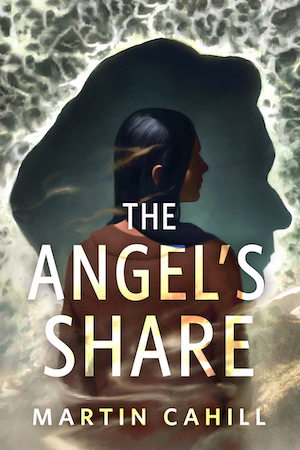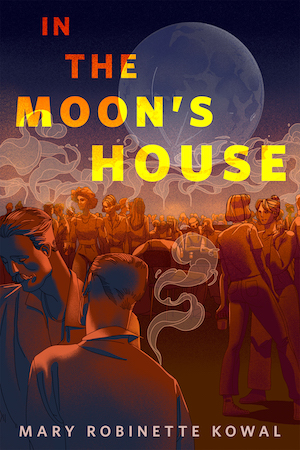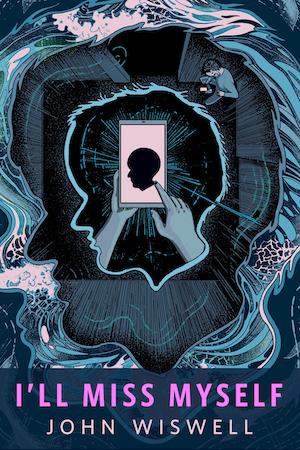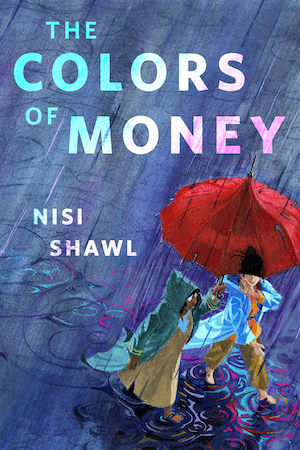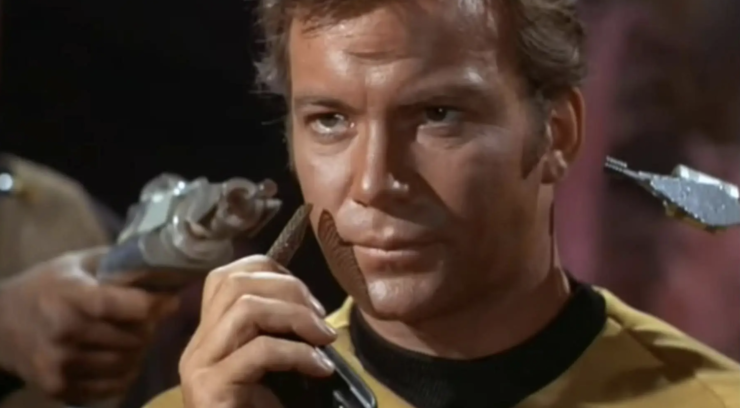During its initial three-year run (1966-1969) on NBC-TV, one of the defining characteristics of Star Trek (aka Star Trek: The Original Series) was its unabashed optimism about humanity’s future and its relationship to the rest of the cosmos. Here was a science fiction series which proclaimed that by the 23rd century, humankind would all but end war, racism, violence, personal conflict, sexism (well, sort of), and more of our most grievous failings, so that it could soar into the stars as part of a galactic consortium (the United Federation of Planets) of like-minded races and civilizations.
In later years, as the influence of creator Gene Roddenberry began to wane, succeeding spinoffs like Star Trek: The Next Generation, Star Trek: Deep Space Nine, and more recent shows like Star Trek: Discovery began to introduce not just a less rosy view of humanity’s future but also of its two core foundations: Starfleet and the Federation itself. Roddenberry’s mantra that humans would evolve beyond personal disputes was deemed challenging to writing good drama. One entire season of Deep Space Nine put the Federation on a wartime footing, while the other shows explored far darker material as well.
The Original Series has been held up in the decades since it was first broadcast as a paragon of Star Trek’s founding attitudes, even if the intervening years have shown them to be naïve at times or not as progressive as they might have seemed back in the 1960s. Yet TOS did its share of delving into the darkness too. Here are a dozen episodes of the series that ended on far grimmer notes than Star Trek was originally known for—and in many cases, the episodes and the show were better for it.
“The Man Trap” (S1, E1)
The first Star Trek episode to be broadcast on NBC (on September 8, 1966), The Man Trap—written by science fiction author George Clayton Johnson (Logan’s Run)—seems on the surface to be a rather standard monster story.
The Enterprise arrives at planet M-113, where the ship is scheduled to drop off supplies for Dr. Robert Crater and his wife Nancy, who are conducting archaeological research there. The landing party is attacked by a creature that can change shape and needs salt to survive, impersonating the long-dead Nancy and members of the crew to get itself aboard the Enterprise and drain its victims—including Dr. Crater—of the salt in their bodies.
At the episode’s climax, a disbelieving Dr. McCoy (DeForest Kelley) kills the creature—which has again taken the form of Nancy, with whom McCoy once had a relationship—before it can harm Captain Kirk (William Shatner). Despite nearly being killed, Kirk expresses regret that they were forced to exterminate the last member of an ancient species. Yet the fact remains that they do kill the creature, instead of even trying to communicate with it. Although Star Trek held the idea of contacting and respecting new life forms in near-reverence, basic survival outweighed science this time out.
“Charlie X” (S1, E2)
A classic early Trek episode, “Charlie X” opens with the Enterprise taking a new passenger on board: Charles Evans (Robert Walker Jr.), a 17-year-old boy who somehow survived for 14 years on the seemingly uninhabited planet Thasus after his parents’ ship crashed.
What Kirk and the crew eventually discover is that there are in fact Thasians, highly advanced beings who gave Charlie incredible psionic powers to survive on their world—but Charlie is too immature to control them and wreaks havoc aboard the ship. Since Charlie is too dangerous to enter civilization, he must return to Thasus, where he will live a lonely life among the incorporeal Thasians.
Although Kirk tries to convince the Thasians that Charlie could be taught to rein his powers in, it’s no use: despite Charlie’s own frantic pleas that he wants to remain with his own kind (“I can’t even touch them!”), he vanishes from the Enterprise bridge. The existential horror of his fate weighs on Kirk and the crew despite what Charlie has put them through, and the tragedy stems from this young boy being given virtually unlimited power and no human guidance to help him develop as a healthy human being.
“What Are Little Girls Made Of?” (S1, E7)
Captain Kirk and Nurse Christine Chapel (Majel Barrett) beam down to the frozen planet Exo-III to meet with Dr. Roger Korby (Michael Strong), a brilliant exobiologist—and Chapel’s fiancé—who was thought to be dead. Korby discloses that he has discovered technology, left behind by a long-extinct race, which can create lifelike androids. He has already replaced his assistant with one and manufactured another in the shape of a beautiful woman (Sherry Jackson), with the help of an older android (Ted Cassidy) who once served the planet’s original inhabitants.
Korby creates an android replica of Kirk and sends it to the Enterprise, part of his campaign to seed the galaxy with his own civilization of android replacements. The plan is ultimately foiled, and it’s revealed that Korby himself is an android, his consciousness transferred to the robot just before he died of frostbite. By the end of the episode, all the androids, including Korby, are destroyed, with a rueful Kirk telling Spock, “Dr. Korby…was never here.”
Written by Robert Bloch, “What Are Little Girls Made Of?” is a grim morality play about losing our own humanity to technology, which cannot (at least for now) duplicate human emotion, judgment, and reason. Literally the entire guest cast is dead by the end of the episode as the androids end up wiping each other out. This is supposed to be an improvement?
“The Conscience of the King” (S1, E13)
Kirk is made aware by a childhood friend that a man named Anton Karidian (Arnold Moss), leader of a traveling theater troupe, may be Kodos the Executioner, the one-time governor of a space colony who ordered the deaths of half the colony’s 8,000 inhabitants due to a food shortage. Kirk, his friend, and Enterprise crewman Riley (Bruce Hyde) are the last survivors of a group of nine colonists who saw Kodos’ face—the others have been murdered, and Karidian’s troupe was in the vicinity for each death.
When Kirk’s friend is killed and attempts are made on both his and Riley’s lives, Kirk confronts Karidian directly, but the man—although clearly tormented by his past—does not come clean. Karidian, who is indeed Kodos, finds out that his daughter Lenore (Barbara Anderson)—who he thought he had shielded from his horrific history—is the one killing the last colonists who can identify her father.
In the finale, Lenore attempts to shoot Kirk with a phaser, but her father steps into the line of fire and is killed, driving her insane. Kirk, who came to care for Lenore, is left shaken by the entire incident. That’s hardly surprising; justice for a mass murderer is finally served, but far too late and at the cost of several more lives and a young woman’s morality and sanity.
“Balance of Terror” (S1, E14)
“Balance of Terror” chronicles a cat-and-mouse game between the Enterprise and a Romulan vessel that has destroyed several Federation outposts along the Neutral Zone bordering Romulan space. Wary of igniting a full-scale war, Kirk must outmaneuver the Romulan commander (Mark Lenard) and destroy his ship—which is equipped with a cloaking device rendering it invisible—before it can return home.
This one has it all: action, suspense, space battles, and even a lesson in bigotry, as navigator Stiles (Paul Comi) accuses Spock (Leonard Nimoy) of being a spy for the Vulcan-like Romulans. Although the Enterprise defeats the Romulan vessel, its commander expresses regret to Kirk in their only face-to-face communication, suggesting that in a different reality they could have been friends. He then blows up his own ship instead of being taken prisoner.
In a final, tragic scene, Kirk must comfort an ensign who was supposed to get married earlier in the episode—and whose fiancé, a weapons specialist, was killed in the battle. This was the first time that Star Trek addressed the cost, trauma, and needless waste of war, but certainly not the last—although it remains just as powerful and haunting now as it did decades ago.
“The Alternative Factor” (S1, E27)
“The Alternative Factor” is infamous for being one of the worst episodes of Star Trek’s otherwise stellar first season. After a strange phenomenon causes the entire galaxy to briefly “wink” out of existence, the Enterprise picks up a frantic man named Lazarus (Robert Brown), who says he is pursuing a murderous creature that wiped out his people and is responsible for the cosmic “wink-out.”
It turns out that the creature is also Lazarus—just Lazarus from a different universe that’s composed of anti-matter. He’s also the sane one: he explains to Kirk that should he and the Lazarus from our universe, who is composed of matter, ever confront each other in one of the two universes, both realms will be destroyed. His solution—with Kirk’s help—is to shove himself and “our” Lazarus into a sort of magnetic vault between the two universes, where they’ll remain for all time.
All this confusingly plays out with the two Lazaruses constantly switching places amidst a breakdown in logic that even Spock can’t save. Yet that final image—of being locked in a room with your mortal enemy for all eternity—is admittedly a haunting one, and ends an otherwise poor outing on a somber note.
“The City on the Edge of Forever” (S1, E28)
After Dr. McCoy accidentally gets an overdose of a drug that can drive the user insane, he beams down to a planet and vanishes into an ancient time portal left behind by a long-extinct civilization. His actions change the entire course of history, wiping out the Federation, Starfleet, and the last 300 years of human advancement, while leaving Kirk, Spock, and a landing party stranded on the dead planet’s surface.
Kirk and Spock jump through the portal to find McCoy and reset history. They end up in 1930s Depression-era New York, where Kirk meets and falls in love with a young woman named Edith Keeler (Joan Collins). It turns out, however, that McCoy saving Edith from death in a car accident is the incident which changes all of history; for the future to proceed normally, Kirk must let Edith die.
“The City on the Edge of Forever,” written by sci-fi legend Harlan Ellison, is still widely considered the best episode of the original series and one of the finest Trek segments ever. It places Kirk in an impossible situation: Edith must perish, or else Kirk will be responsible for sending history down an unimaginably catastrophic path. It’s as tragic an ending as anything seen on TV at that time, and leaves Kirk devastated. It also poses the sobering question: what would you do?
“A Private Little War” (S2, E19)
The Enterprise visits a supposedly peaceful, agrarian planet named Neural, where Kirk—who has been to the planet before—is shocked to see a group of villagers attack a clan called the Hill People with firearms, which this planet should not be able to develop yet. After Spock is shot and wounded, Kirk and McCoy discover that the Klingons have secretly been supplying the guns to the villagers.
The conflict eventually escalates to the point where the peace-loving leader (Michael Witney) of the Hill People—whose wife (Nancy Kovack) is brutally murdered by the villagers—finally asks Kirk for guns as well. A weary captain, convinced that both sides must be armed equally, agrees, telling Scotty (James Doohan) in the end to manufacture a hundred guns, or as he describes them, “a hundred…serpents, for the Garden of Eden.”
“A Private Little War” was written expressly as an allegory for the Vietnam War, with the Klingons and Federation standing in for the Soviet Union and U.S. supplying arms to both sides of the conflict. Gene Roddenberry revised the original script to tone down the references, but the allegory still remains, along with the implication that Kirk’s actions—while meant with good intentions—are only going to prolong and expand the bloodshed.
“The Paradise Syndrome” (S3, E3)
While surveying a world that lies in the path of an asteroid, Kirk, Spock, and McCoy discover that the planet is home to humans who resemble pre-industrial Native Americans. Near their village is a mysterious obelisk that may have been left behind by the higher intelligence that transplanted the humans to the planet ages ago. Kirk accidentally opens the obelisk and falls inside, emerging with his memory erased as he’s treated by the tribe as a deity.
As the Enterprise’s mission to deflect the asteroid fails, damaging the warp drive so that it takes months to travel back to the planet, Kirk builds a new life with the tribe, falling in love with a woman named Miramanee (Sabrina Scharf) and getting her pregnant. But when Kirk is unable to deflect the asteroid himself (since he is a “god”), the villagers stone him and Miramanee, killing her.
Frankly, “The Paradise Syndrome” has dated badly in terms of its representation of Native Americans (even on another planet). It does end on a somewhat positive note, as Kirk, his memory restored, and Spock finally reopen the obelisk and deflect the asteroid. But Kirk—free, at least for a while, of his responsibilities to the Enterprise—truly embraces his brief new existence as “Kirok” and falls deeply in love with Miramanee. Her death (and that of their unborn child) is not only tragic but needless.
“Let That Be Your Last Battlefield” (S3, E15)
The Enterprise picks up two aliens from the little-known, distant planet Cheron: Lokai (Lou Antonio), who claims he is a political refugee seeking asylum, and Bele (Frank Gorshin), an authority figure who has been pursuing Lokai for 50,000 Earth years and is determined to bring him back to Cheron to face punishment for his alleged crimes.
Both humanoids are all black on one side of their bodies and all white on the other, except that Bele and his people are black on the right, while Lokai and his people are white on the right. This seemingly trivial difference has led Bele’s people to allegedly subjugate Lokai’s race for ages, with the two beings seemingly incapable of reasonably settling their differences.
When the Enterprise arrives at Cheron, it turns out that Bele and Lokai’s races have completely annihilated each other. Yet these two last survivors still cannot give up their hate, with Bele pursuing Lokai to the planet’s surface. Kirk leaves them there, exhausted and dispirited by their inability to stop hating each other. Yes, it’s heavy-handed, but the climax of “Let That Be Your Last Battlefield,” and its message about the destructive nature of racism and intolerance, is among the show’s most downbeat.
“Requiem for Methuselah” (S3, E19)
While scouting a supposedly uninhabited planet for a rare element needed to combat an outbreak of Rigelian fever, Kirk, Spock, and McCoy are confronted by an elderly man named Flint (James Daly), who tells them they must leave or be destroyed. Flint eventually changes his attitude and invites them to his home while his robot servant locates and processes the element. Once there, they meet his “ward,” Rayna (Louise Sorel), with whom Kirk quickly develops a mutually intense attraction.
Flint, who hails from Earth, eventually reveals that he is more than 6,000 years old, and has spent eons under different names—including historical figures like Leonardo da Vinci, Johannes Brahms, Alexander the Great, and others. Lonely, he has built himself an android companion—Rayna—with whom he wants to share the rest of his life. He uses Kirk to bring out Rayna’s emotions, but Rayna, unable to choose between the two men and overwhelmed by her new feelings, self-destructs.
Although Kirk only spent a few hours with Rayna, he is apparently stricken with grief over her demise. When he falls asleep in his quarters, Spock actually mind-melds with him to make Kirk forget her. It’s certainly a somber moment: Kirk is so saddened by the entire affair that Spock feels the need to secretly erase his captain’s memories of it.
“All Our Yesterdays” (S3, E23)
Most of the main cast got a chance to fall in love in Season Three and this, the original series’ penultimate episode, was Spock’s turn in the barrel. When he, McCoy, and Kirk are accidentally thrown back in time on a planet whose sun is about to go nova, Kirk ends up in the planet’s version of the 17th century while Bones and Spock are flung into its Ice Age. There, they meet a woman named Zarabeth (Mariette Hartley), who was sent there from the future as punishment by a tyrannical leader.
Since Spock and McCoy were thrown 5,000 years into the past, Spock begins to revert back to the way Vulcans behaved before they embraced logic, expressing anger toward McCoy and falling in love with Zarabeth. But Zarabeth has lied to them, telling them they can’t return to the future when in reality she just wants them to stay because she is totally alone.
Kirk, Spock, and McCoy all get back in time to escape the supernova, and while Spock tells McCoy that he has reverted back to his normal self, McCoy has his doubts. Meanwhile, Zarabeth’s fate—dying alone, thousands of years in the past—hangs heavily over them as the Enterprise warps out of danger.
What are some of your favorite examples of darker endings on Star Trek: The Original Series?


